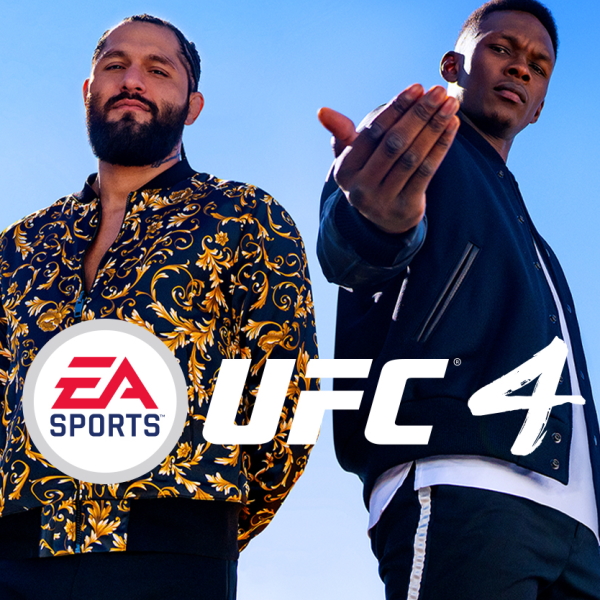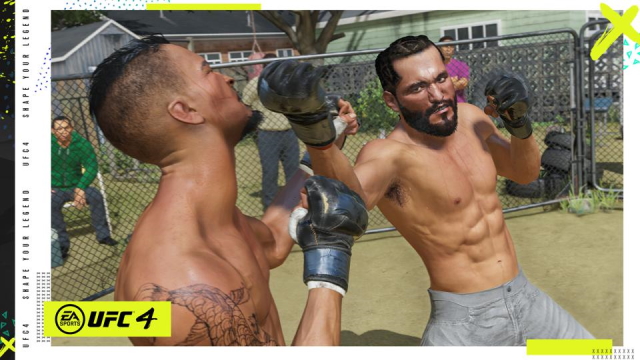
I’ve played a lot of UFC 3. A couple of runs through the career mode, including the highest difficulty and when I checked my online games, it totally nearly 5,000 games over the two and a half years it was out. So, a complete overhaul to the control scheme for UFC 4 made my brain do all kinds of crazy things and I hated it at first. Now though, I love it.
UFC 4 is more of an evolution than a revolution. Steadily the games have been getting better, but as seems par for the course for EA these days there are some steps forward, and some back. Let’s start with the good.
The new control scheme. There are essentially three elements to mixed-martial-arts (in video game format). The stand-up fighting, the clinch, and grappling. Stand-up here is fluid and crisp. It feels great, is fast and smooth. Face buttons control a limb each, a trigger is a modifier for body hits, there’s another for technical, a bumper for specialist strikes, and one for blocking high. Double triggers block low. Already, your head is spinning. The good news is that it works well, and plays well once you get the hang of it. This control scheme allows for the complexity and combinations of moves in a real-life MMA fight. Trying to explain it to someone is a mind-melter though.
With all of those combinations, you have to press and hold actions. L1, R1 and triangle will do a spinning back fist (if your fighter has this move) whereas holding triangle does a spinning heel kick. Is the difference important? Yes, because one is quick and flows nicely into the combo, the other if missed means you’re open. Exploring these gaps with momentum around the Octagon is a super important component of the stand-up game and makes for a lot of strategies.
Clinching used to be done by a laborious grapple control. Now it’s a few button taps and is a dynamic moving tangle of bodies throwing all sorts of fists, knees and elbows. Position is important to maximise advantage in the cage or against it, as well as defending attacks. A ‘grapple advantage’ bar shows where you should or shouldn’t try to do certain things based on momentum. Pushing forward and doing damage? You’ll have the advantage to go for a takedown.
Finally grappling is the most similar element to the last game. Once on the floor, you hold a direction to move in that direction and your opponent has the chance (if quick) to block this transition. I like that it hasn’t changed as personally, I think the system works well and rewards knowledge of the game and real-life MMA. For those new to the series, there’s a new control scheme which requires you just push in the direction of the activity you want to do – stand-up, advance, submission so you don’t need to worry. This is a great addition although, for seasoned experts, you’ll want the legacy controls (if only to satisfy your muscle memory).
Whilst all these elements work for me, and I think they’re good, here comes the bad. That aforementioned trigger/bumper combo. It escalates. Defend a takedown with both triggers. You also need to push a direction if the opponent is driving you a certain way. Maybe you’ll hold a bumper as well to do a reversal or submission (if your character has this – knowing what your character can and can’t do is very important). You’ll quickly begin spider-clawing the controller with various combinations of triggers and bumpers. I think requiring three to be pressed at once is taking liberties personally.

It’s not even consistent. In a clinch, you push L1 and triangle and square to elbow. In a grapple, it’s L1 and square. Standing up, it’s R2 and square. Why is it not consistent? I wish someone just sat down with a big whiteboard and drew this out properly. I did this for UFC 3 to better learn the commands. I can’t bring myself to do it for UFC 4 yet.
The submission mini-games are a bone of contention historically. For my money, they’re worse this year. There are two types, choke and joint. Choke someone out, you are given a circle and have to overlay your colour on your opponent’s. The faster they move, the bigger their colour section grows, so keeping calm and controlled is a better option. How this works in practice I have no clue as I lose almost everyone, although in principle it’s a good idea and reflects the real-world approach to escaping chokes, they just spin around relentlessly until someone wins. Joint submissions have you move a colour section back and forward with triggers in a pirate ship fashion while your opponent tries to overlay it. Same concept, slightly different way of doing it. The move you move it quickly, the larger it gets. I feel like there is a better system here to be found that doesn’t involve button mashing.
Career mode gets a bit of an overhaul – an in-game voiced Coach (Coach Davis) picks you up on the regional scene and does a really good job of teaching you all the various in-game mechanics. This should be the first stop for players to this game really although it’s geared more towards total newbies than veterans. Between fights, you do training to get your fitness up so your skills don’t diminish in the fight but these can’t be simmed. You also have the option to do various promotional bits and pieces, learn moves from other fighters based on your relationship with them (and how much you’ve dissed them on social media). In theory it’s great, in practice it’s a menu-heavy exercise punctuated by loading screens that in total, are 2-3 times the length of the entire fight before you begin preparing for the next one.
Everything you do though counts towards a persistent fighter level. That level awards XP with which you can then buy items for your persistent fighter. Your career fighter and your ‘avatar’ can be the same or different, and then this is used (along with any created fighters) in any modes, transcending weight class (with weight adjusted as necessary). This is cool, although my preference would be that these fighters weren’t used for online ranked play. One of the most important aspects of an MMA fight is knowing where your opponent is strong or weak, and adapting accordingly. This is harder to do against a created fighter. To balance things, the stats are set at 4 stars (so you’re good but not the best) and you select a ‘build’ before each fight. So if I’m fighting someone’s Frankenstein I can see they’re using a wrestler build, so still adjust.
Again though – it’s the little things. The EA Sports 2020 presentation of their series passes over to this, with coloured highlights across menus etc, but in-game it keeps an authenticity. Little intros to each fighter and celebrations are cool, but it increases the time to get into and out of the action. New commentary from former UFC double champion Daniel Cormier is very good although there are still a few bits mapped incorrectly. Other head-scratching changes – online ranked fights now have a fixed weight class for an hour whereas previously you could choose, and title fights are only ever 3 rounds. In real-life UFC, they are 5 rounds. This is a more tactical and gruelling fight, and oddly not reflected in game. EA Sports motto is “if it’s in the game, it’s in the game”. Only it isn’t here. Hopefully this gets patched.
There have been some balance changes already which are good. There’s a backyard and Kumite (think Enter the Dragon) arena to fight in, if that’s your thing. Ultimately it feels to me like with some improvements has come some things that didn’t need changing, or have changed for the worse. I guess we can’t have our cake and eat it. Having said that, the core game here is great, there aren’t any really insurmountable issues, it’s just perhaps not quite the perfection from UFC 3 that most were hoping.
Reviewed on PS4


Leave a Reply